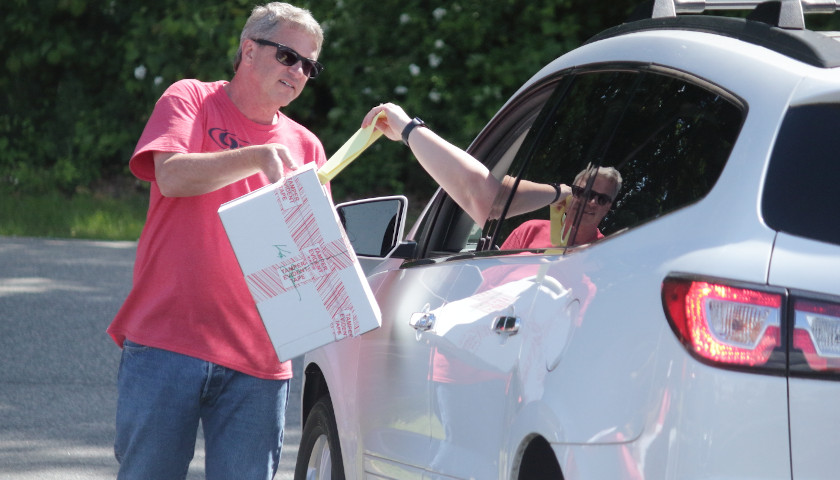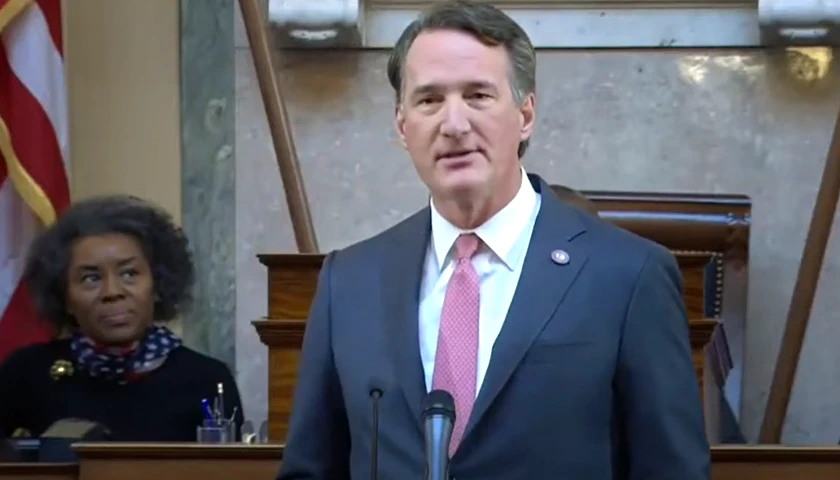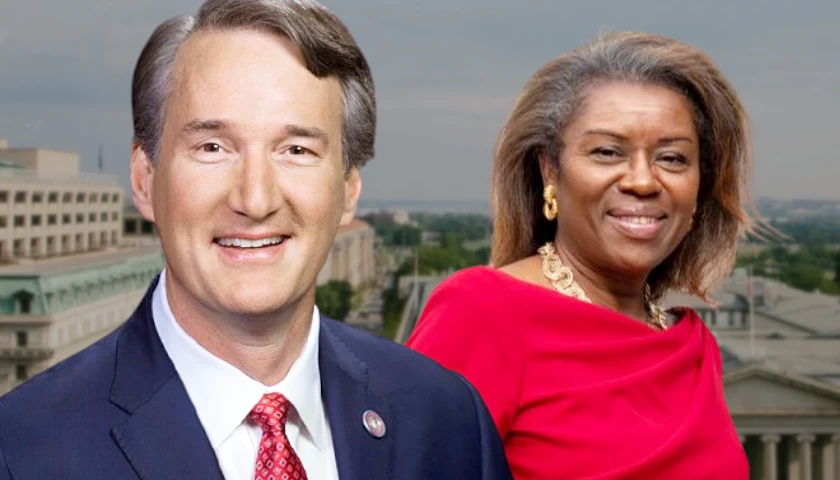The Republican Party of Virginia held its unassembled convention to pick party nominees for governor, attorney general, and lieutenant governor on Saturday. Official results will be slow to come in, thanks in part to a decision to hand-count the tens of thousands of ranked-choice ballots. As a result, campaigns and elections watchers are looking at turnout estimates for clues about who the nominees might be. Estimates from Republican Governor’s Association officials claim about 52 percent of the over 53,000 registered delegates turned out.
Officials from several locations across the commonwealth told The Virginia Star that excited delegates led to a rush around mid-morning at polling locations that tapered off in the afternoon. Some locations used drive-through voting, while others only allowed drive-through voting for handicapped delegates. As a result, in some drive-through locations there was a backup. Overall, officials seemed positive about Saturday’s convention process.
“The Republican Party of Virginia could not be happier with how smoothly and efficiently our convention was run today,” RPV Chair Rich Anderson said in a statement. “I would like to thank the campaigns, their staff, and our countless volunteers for making this day a successful one. It is a promising sign of things to come that so many Republicans from across Virginia came out in record numbers and supported their candidates at the grassroots level.”
Who Benefits From Lower Turnout?
Conventional wisdom suggests that lower turnout may be a bad sign for Glenn Youngkin’s campaign, which registered a large number of new delegates who are less likely to participate.
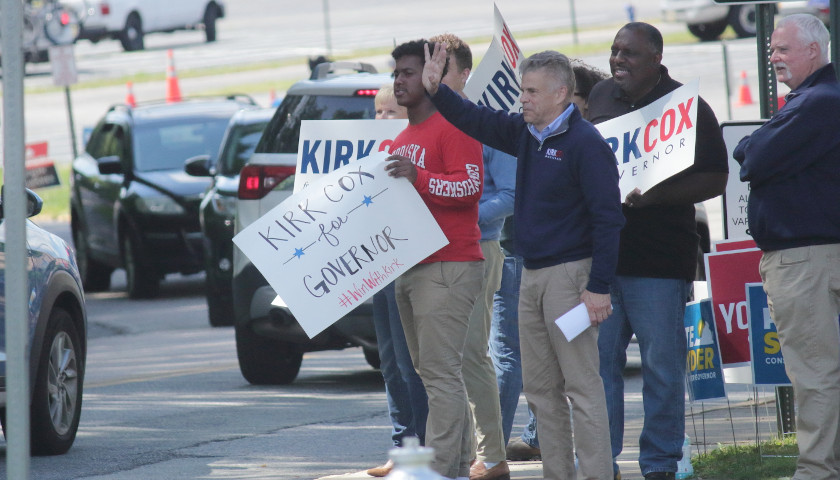
“Always hard to predict convention type weighted formats but 1/3 of delegates registered not showing up to vote today does not bode well for Glenn Youngkin who was the most aggressive trying to preregister less likely voters,” Democratic pundit Ben Tribbett tweeted.
“Those turnout numbers look very good for Snyder,” Prince William GOP Vice Chairman Willie Deutsch told The Star.
Deutsch has endorsed Snyder.
He said the lieutenant governor’s race seems wide open, but Delegate Jason Miyares’ (R-Virginia Beach) campaign thinks they may win the attorney general nomination. “Miyares’ people are pretty confident right now around the state,” Deutsch said.
“If you must prognosticate, the low turnout numbers suggest that Youngkin and [Senator Amanda Chase (R-Chesterfield)] underperformed, while Snyder and [Delegate Kirk Cox (R-Colonial Heights)] hit their targets,” Shaun Kenney wrote in an email for the Republican Standard Saturday evening.
Kenney wrote, “Add to it the fact that the weighted votes in the western parts of Virginia — where votes are harder to come by and where connections and relationships matter — all give advantages to Snyder.”
“Pete Snyder has the edge because the Youngkin vote that Cox was counting on for second place votes didn’t materialize,” said John Fredericks, Publisher of The Star.
Delegate Kirk Cox (R-Colonial Heights) used a ranked-choice voting strategy, and he will hope to pick up some of Youngkin’s voters if he is eliminated. Fredericks said Cox seemed to be performing better than expected thanks to suburban votes.
Fredericks said, “Although [Chase] had a very robust turnout in her key strongholds, the lack of her second-choice ranked voting will basically sink her candidacy.”
Cox used a ranked-choice voting strategy, and he will hope to pick up some of Youngkin’s voters if he is eliminated. Fredericks said Cox seemed to be performing better than expected thanks to suburban votes.
Still, not everyone thinks Youngkin is in trouble. Norfolk GOP Chair Robert Brown said based on what he saw Saturday, he thinks that the race is between Youngkin and Cox.
All that is speculative. The ranked-choice format with different weight being given to delegates from different regions makes it difficult to predict final results.
Vote-Counting Method Explainer

Delegates to the convention are weighted. Every locality in the Commonwealth is given a maximum number of delegates allowed to the convention. The weight of a delegate’s vote depends upon on population, meaning the more people that live in a locality, the more delegates allocated to the convention from that locality.
The weight of the delegate vote is factored by the amount of delegates filed to the convention. The RPV did not place a cap on the number of delegates that candidates could file, meaning that localities could file unlimited delegates without having a mass meeting to slim down the delegate list.
The Virginia Public Access Project created a graphic showing how much each delegate vote counts in the Commonwealth. For example, it is rumored that the City of Virginia Beach GOP filed 4,000 delegates to the convention. Virginia Beach was only allocated 661 votes, so if all 4,000 delegates vote, each delegate is only worth about one-fourth of a vote.
Locality weighting is based on whether that locality voted for Donald Trump in the recent election. This means that delegates in regions that voted for Trump are worth more than in other localities. This weight measurement is a method that can level the playing field for delegates across the state and makes areas like Southwest and Central Virginia just as important as Northern Virginia.
There is also a question of how those delegate votes are getting transported to Richmond and how they will be counted. At the end of the convention day, the boxes were sealed by RPV courier and shipped to Richmond. This process is time consuming for multiple reasons.
The far southwest polling location in Norton is about a five-and-a-half hours drive from Richmond. Those ballots from far Southwest Virginia are being flown to Richmond by a member of the State Central Committee.
Also, Tangier Island has a voting site and with its location in the middle of the Chesapeake Bay, those ballots have to get to Richmond by boat or seaplane. Representatives from the campaigns are allowed to travel with the ballots to ensure ballots are not tampered with.
Couriers will transport the ballots to the Richmond Marriott. Those ballots will be on video camera and have representatives of each campaign watching them at all times, even overnight. There will be armed guards watching those ballots the entire time they are in the ballroom. A third-party vendor was selected by RPV to count the ballots.
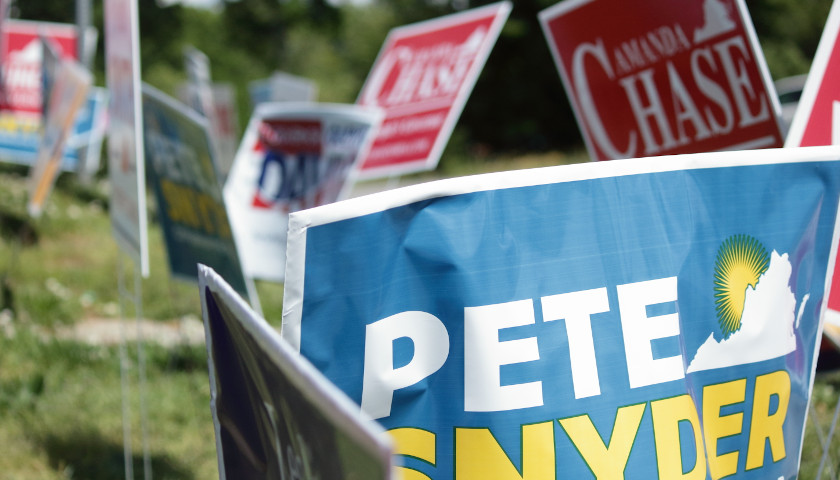
The process of counting each ballot will begin on Mother’s Day.
According to RPV officials, the counting for attorney general will begin at 9 a.m. on Sunday. All ballots to this convention are being counted by hand, in an effort to provide to provide election integrity. Many have speculated that the attorney general’s race will be decided by Monday afternoon. Once counting for the attorney general’s race is finished, counting ballots for lieutenant governor will begin. The counting process for the governor’s race will begin once counting for the other two races is finished.
The party has set a hard deadline of May 15th, 2021 to have all ballots counted. Many have speculated this will take until at least next Thursday, May 13, to determine the nominee for governor.
The RPV chose to use the “Australian Method” of hand counting ranked-choice voting. This method is used by the Australian government to count their ballots for their parliamentary elections.
A document from the Parliament of Australia, instant runoff voting, commonly referred to in America as the “Australian Method,” describes the system.
However, in many cases no candidate receives more than 50 per cent of first preferences. In 2004, 61 House of Representatives electorates (40.7 per cent) were not decided on the first count. If this occurs in an electorate the following procedure is followed:
- the candidate with fewest votes is excluded from the count
- this candidate’s votes are transferred to other candidates according to the second preferences shown on the excluded candidate’s papers and
- if this still does not produce a candidate with over half of the vote, other candidates are progressively excluded, and second or later preferences distributed until one candidate has more than half of the total number of votes.
The main goal of this is to make sure that a candidate is nominated with a majority of the vote, not a plurality of the vote. Many have stated that this was introduced to prevent firebrand Chase from winning this election.
Chase has made similar claims, first saying she wouldn’t run in a convention, then saying she would, then saying that if Snyder wins she would run as an independent.
She renewed her warning Saturday.
“If RPV steals this election for Pete I still have plenty of time to run as an independent. Clear corruption by RPV, I will not honor a pledge if the Party cannot run a fair process,” she tweeted.
“When the counting is over, we must advance as one party,” House of Delegates Minority Leader Todd Gilbert said in a statement obtained by Virginia Public Radio reporter Michael Pope.
Gilbert said, “Once the counting is complete, we must come together to ensure that we elect a Republican governor, lieutenant governor, attorney general, and Hose of Delegates this fall.”
“In the meantime, I encourage everyone to do the difficult thing and exercise patience as RPV does that hard work of counting the ballots, under the watchful eyes of the candidates,” Gilbert said. “As a wise songwriter once said, the waiting is the hardest part.”
– – –
Eric Burk and Matt Colt Hall are reporters at The Virginia Star and the Star News Digital Network. Email tips to [email protected] or [email protected]. Follow Matt on Twitter at @MattColtHall on Twitter.
Photos by Eric Burk.

